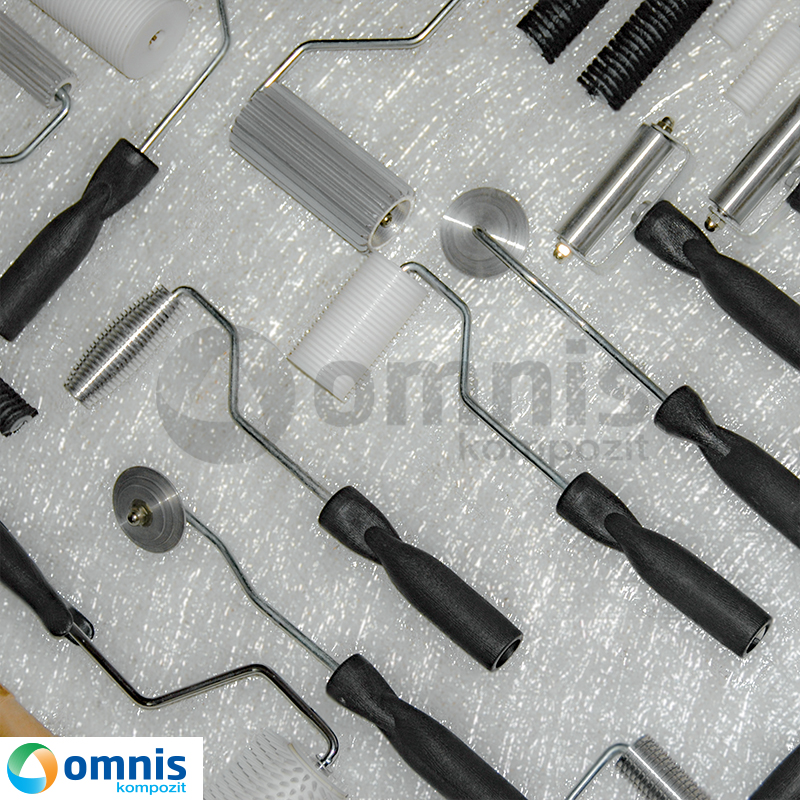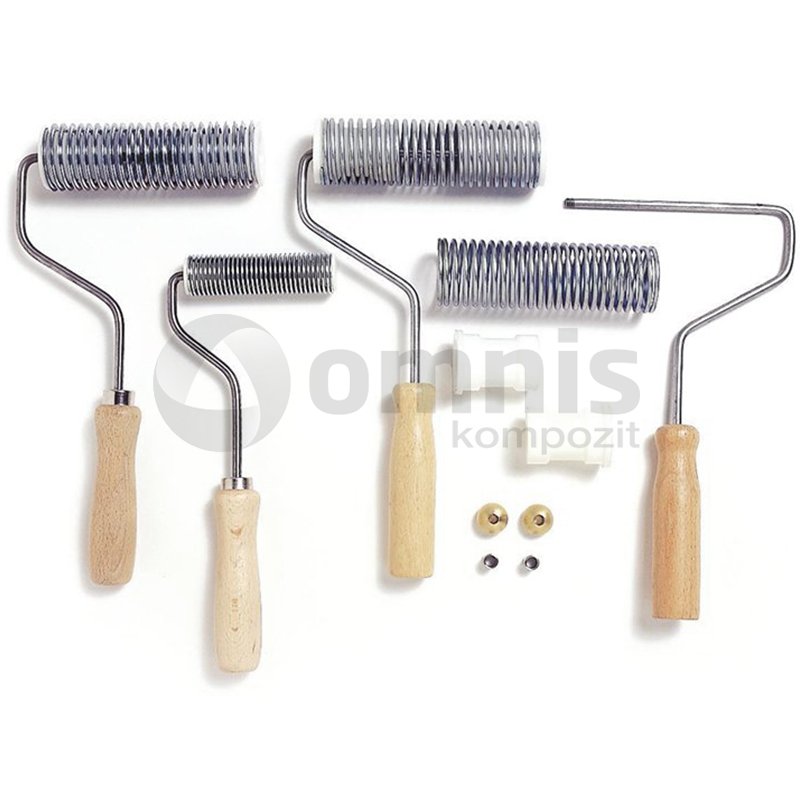Composite Rolls
A composite roller is a high-performance roll used in various industrial applications, made from composite materials such as fiberglass, carbon fiber, and resin. These materials are selected for their exceptional strength-to-weight ratios, durability, and resistance to wear and environmental factors. A composite roller offers a modern alternative to traditional metal rolls, providing significant advantages in terms of weight reduction, energy efficiency, and operational longevity. Ideal for applications requiring precise motion control and minimal maintenance, composite rollers are revolutionizing industries by enhancing performance and reducing operational costs.
How are composite rolls manufactured?
They are manufactured using sophisticated techniques such as filament winding, pultrusion, or resin transfer molding. These processes involve the careful layering and curing of composite materials around a core or mandrel to achieve the desired shape and mechanical properties. Filament winding is particularly effective for creating strong, durable rollers with fibers precisely oriented to bear loads efficiently. After the composite materials are applied, the roller undergoes curing in a controlled environment to ensure it solidifies into a rigid, robust form. This manufacturing process allows for the production of composite rollers that meet stringent quality and performance standards, tailored for specific industrial applications.
What materials are typically used in the production of composite rolls?
In the production of composite rollers, materials such as fiberglass, carbon fiber, and various resin systems (e.g., epoxy, polyester, vinyl ester) are commonly used. These materials are chosen for their excellent mechanical properties, including high strength, low weight, and resistance to corrosion and wear. Carbon fiber is valued for its exceptional strength-to-weight ratio and stiffness, while fiberglass offers durability and cost-effectiveness. The choice of resin plays a crucial role in determining the roller’s resistance to chemicals, heat, and environmental conditions, ensuring the composite roller’s performance and longevity in demanding industrial settings.
What are the main advantages of using composite rolls over traditional materials?
The main advantages of using composite rollers over traditional materials include significant weight reduction, enhanced corrosion resistance, improved wear characteristics, and lower overall maintenance requirements. Composite rollers offer superior performance in harsh environments where traditional materials might fail or degrade, providing a more durable, long-lasting solution. Their lightweight nature leads to reduced energy consumption and easier handling and installation. Additionally, composite materials can be engineered to meet specific application needs, making composite rollers a versatile choice for a wide range of industries.
In what industries are composite rolls most commonly used?
They are most commonly used in industries such as printing, packaging, paper manufacturing, textile, and conveyor systems. In these sectors, the benefits of reduced weight, corrosion resistance, and minimal maintenance are particularly valuable. They provide reliable performance in the demanding conditions of these industries, including exposure to chemicals, varying loads, and continuous operation, enhancing efficiency and product quality.
Can composite rolls be customized for specific applications?
Yes, they can be customized for specific applications, offering flexibility in terms of size, material composition, and surface finish. This customization allows manufacturers to tailor the rollers to the unique requirements of different industries and processes, optimizing performance and efficiency. Whether it’s adjusting the roller’s diameter and length, selecting specific composite materials for enhanced durability, or applying specialized coatings for improved wear resistance, composite rollers can be engineered to meet the precise needs of any application.
How do composite rolls compare to metal rolls in terms of performance and durability?
They outperform metal rolls in several key areas, including weight, corrosion resistance, and vibration damping. Being significantly lighter, composite rollers reduce energy consumption and mechanical stress on machinery, extending the life of equipment. They do not corrode like metal, ensuring consistent performance in harsh environments. Additionally, composite materials can absorb vibrations better than metals, leading to smoother operation and less noise. These factors contribute to the superior performance and durability of composite rollers, making them a preferred choice for many industrial applications.
Are composite rolls resistant to corrosion and chemical exposure?
Yes, they are highly resistant to corrosion and chemical exposure. The materials used in their construction, such as epoxy or vinyl ester resins, provide an inert barrier against a wide range of chemicals and corrosive environments. This resistance ensures that composite rollers maintain their structural integrity and performance over time, even in industries where exposure to aggressive substances is common. The durability of composite rollers in these conditions translates to lower replacement costs and reduced downtime for maintenance, offering significant long-term savings and reliability.
How do environmental conditions affect the performance of composite rolls?
Environmental conditions such as temperature, humidity, and chemical exposure can significantly influence the performance of composite rollers. However, the advanced materials used in the fabrication of composite rollers, including high-quality resins and fibers, are selected for their ability to withstand harsh conditions. These materials ensure that the composite roller maintains its integrity and performance, even under extreme temperatures or in chemically aggressive environments. Innovations in composite technology have led to rollers that resist moisture absorption and UV degradation, ensuring long-term durability and consistent operation. By choosing a composite roller, industries can expect reliable performance across a wide range of environmental conditions, minimizing the risk of downtime and maintenance costs.
What types of loads can composite rolls withstand?
They are engineered to withstand various types of loads, including axial, radial, and bending loads. The unique combination of fibers and resins used in composite rollers provides exceptional strength and stiffness, allowing them to handle heavy loads without deformation. Axial loads are well-managed through the roller’s longitudinal strength, while radial loads are supported by its circumferential rigidity. Additionally, the inherent flexibility of composite materials helps absorb and distribute bending loads, reducing the risk of failure under dynamic or fluctuating forces. This capability makes composite rollers an excellent choice for demanding applications where load-bearing capacity and durability are critical.
What maintenance is required for composite rolls?
They require minimal maintenance, a significant advantage over traditional materials. Their resistance to corrosion, wear, and environmental degradation means that routine inspections and occasional cleaning are often sufficient to keep them in optimal condition. Unlike metal rollers, there is no need for frequent lubrication or protection from rust, leading to lower maintenance costs and less operational downtime. However, it’s recommended to regularly check for any signs of damage or wear, particularly in high-load or high-speed applications, to ensure the longevity and performance of the composite roller. By following a simple maintenance routine, industries can maximize the service life of their composite rollers, ensuring reliable and efficient operation over time.
Can composite rolls be repaired if damaged, and how?
Yes, they can be repaired if damaged, extending their useful life and enhancing their value proposition. The repair process typically involves assessing the extent of the damage, removing any compromised material, and applying new composite layers using similar resins and fibers as in the original construction. Advanced repair techniques, such as resin infusion or hand layup, ensure that the repaired area integrates seamlessly with the rest of the roller, restoring its strength and functionality. It’s crucial to consult with a specialist in composite materials to determine the best repair strategy, as the feasibility of repair will depend on the specific type and extent of damage. By leveraging the repairability of composite rollers, industries can avoid the cost and inconvenience of full replacement, further benefiting from the durability and performance of these advanced materials.




